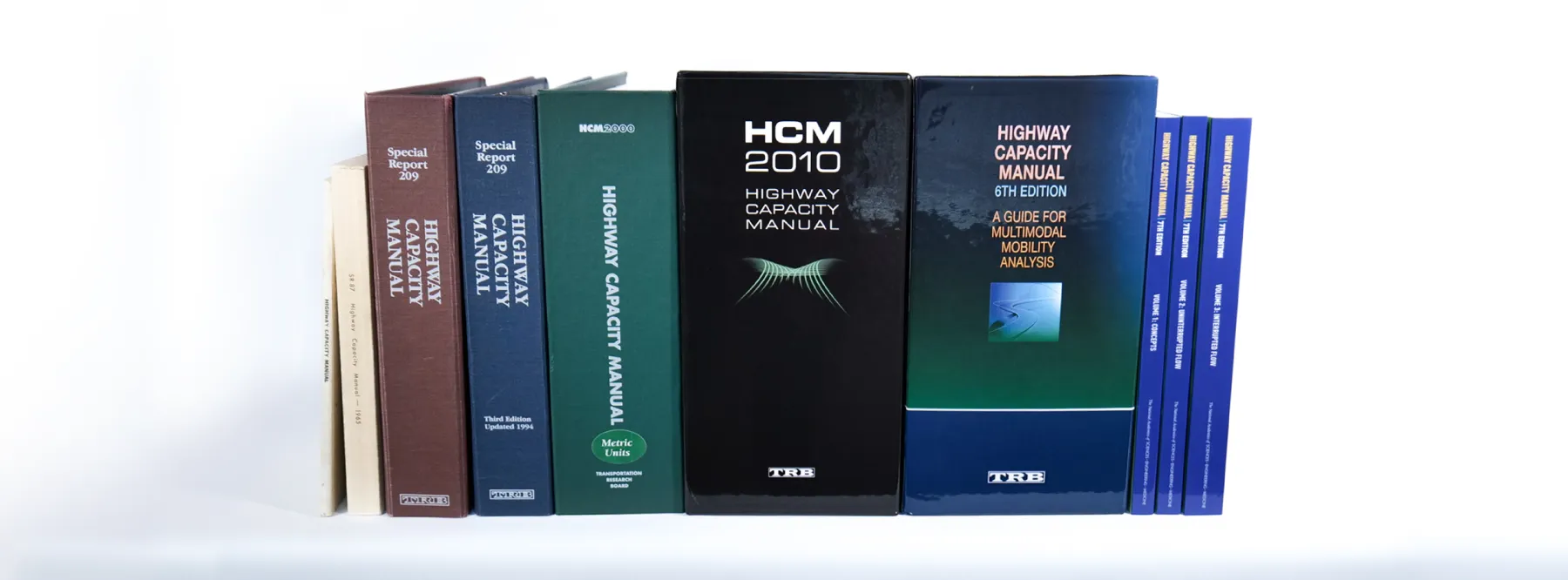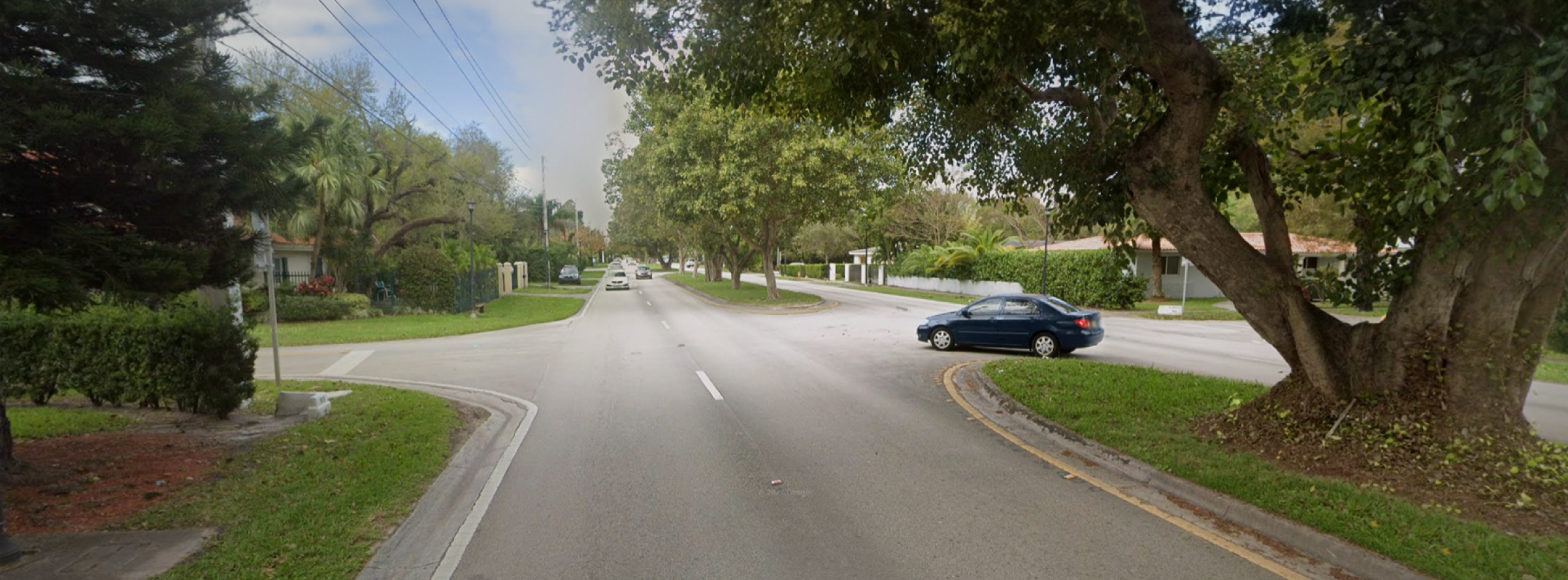The first Highway Capacity Manual was released in 1950 by the Bureau of Public Roads (the predecessor agency to the FHWA) and has been, for decades, the gold standard for evaluating the level of service of several road types.
Since then, the HCM has undergone a major update every couple of years to keep up with the evolving needs of the transportation profession. The Highway Capacity Software (HCS) was first released in 1987, based on the HCM 3rd Edition, and has been updated yearly.
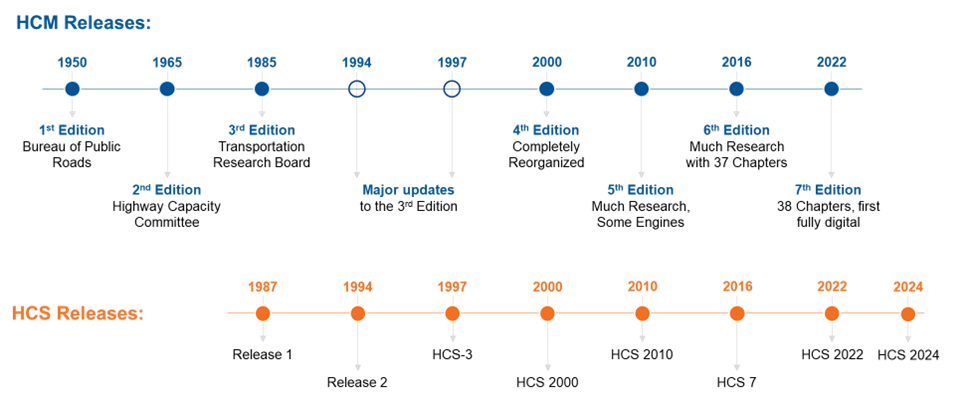
Timeline of HCM and HCS Releases
Every time the HCM goes through a major update, so does the HCS, as it incorporates the most current methods to evaluate the Level of Service (LOS) of different types of roads. This article provides a recap of the major methodological changes in the manual since HCM2000 – if you are not using the latest HCS release, you may be missing out on several features included in the HCM over the last years.
HCM 2010 (2010)
The HCM 2010 release, incorporated in HCS2010, made significant advances in multimodality, adding new methods to evaluate LOS for pedestrians, bicycles, and transit. It also significantly improved the procedures for urban streets, including: evaluation of actuated signals; a new method for roundabouts, a new method for interchange ramp terminals, and a new method to evaluate urban street segments bounded by intersections.
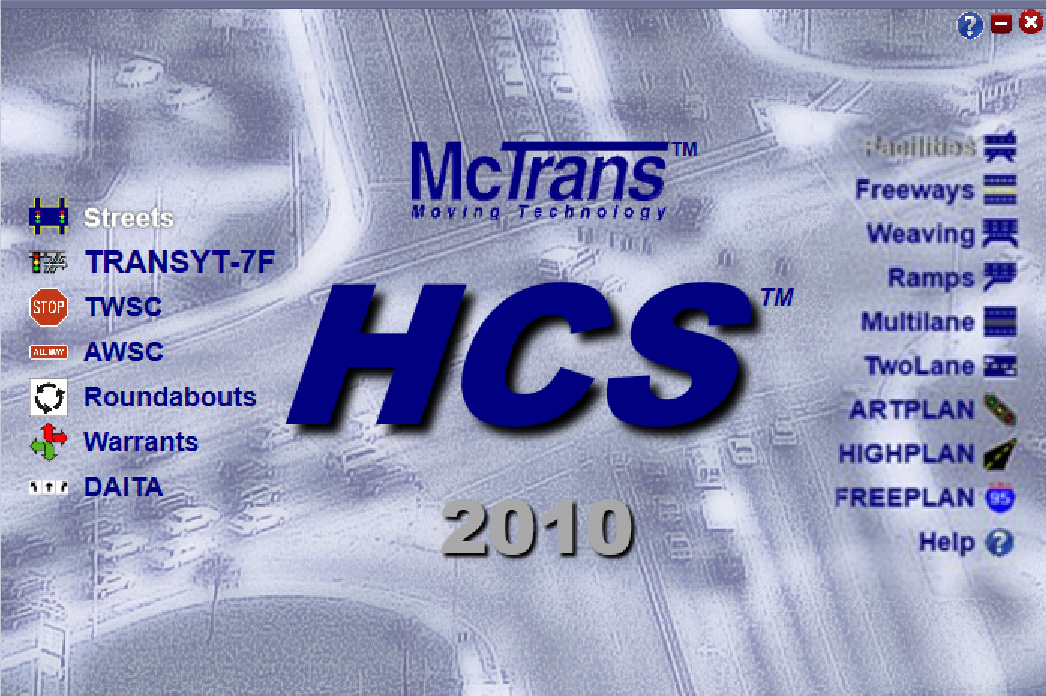
HCS 2010 Main Menu
| SYSTEM ELEMENT | DESCRIPTION |
|---|---|
| Freeway Facilities |
|
| Multilane Highways |
|
| 双车道公路 |
|
| Urban Street Segments | |
| Signalized Intersections | |
| TWSC |
|
| AWSC |
|
| 环岛 |
|
| Interchange Ramp Terminals |
|
HCM 6th Edition (2016)
The HCM 6th Edition, titled “A Guide for Multimodal Analysis”, continued the trend to become a more multimodal standard. It introduced new methods for Travel Time Reliability analyses for freeways and urban streets and significantly increased the capabilities of the Freeways procedures, including work zones, managed lanes and more accurate factors for the effects of trucks. On the urban streets side, the capacity equations for roundabouts were recalibrated yielding significantly higher capacities; new methods for alternative intersections were also included in the manual.
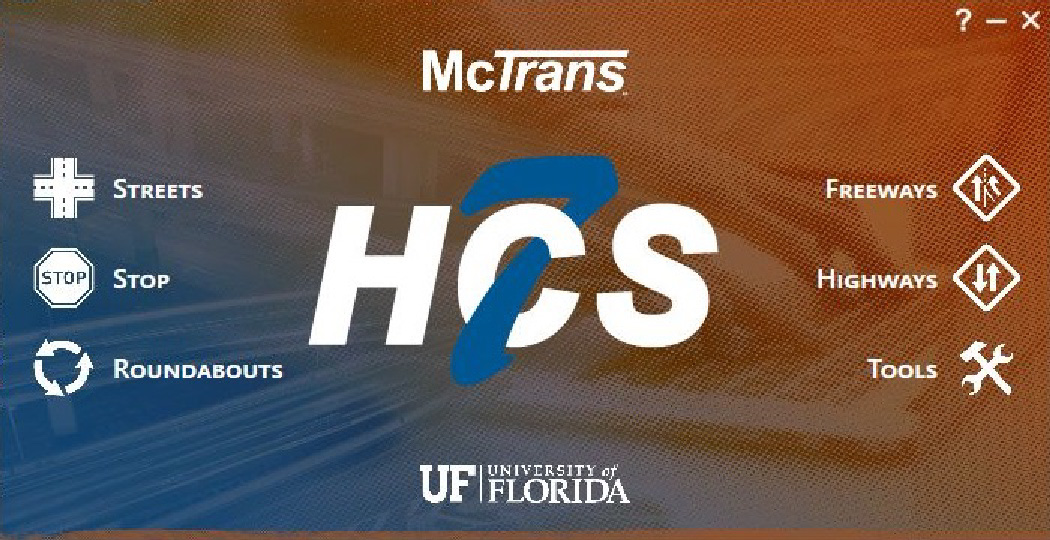
HCS 7 Main Menu
| SYSTEM ELEMENT | DESCRIPTION |
|---|---|
| Freeways 模块 | |
| Multilane Highways |
|
| 双车道公路 | |
| Urban Streets |
|
| Signalized Intersections |
|
| TWSC | |
| AWSC | |
| 环岛 | |
| Ramp Terminals and Alternative Intersections |
|
(6) NCFPR 41 – Incorporating Truck Analysis into the Highway Capacity Manual; (7) NCHRP 03-107 – Work Zone Capacity Methods for the Highway Capacity Manual; (8) NCHRP Analysis of Managed Lanes on Freeway Facilities; (9) SHRP 2 L08 – Incorporation of Travel Time Reliability into the Highway Capacity Manual; (10) FHWA TOPR 34: Accelerating Roundabout Implementation in the United States; (11) NCHRP 03-100: Evaluating the Performance of Corridors with Roundabouts; (12) FHWA TOPR2: Guidance for Alternative Intersections;
HCM 7th Edition (2022)
The HCM 7th Edition, implemented in the HCS2022 release, brought significant improvements to pedestrian LOS methods to better evaluate the effects safety and comfort aspects. Procedures for urban streets and signalized intersections were revised and the TWSC methodology was replaced with a brand new procedure with a new service measure. New additions to the manual also included adjustment factors to evaluate the impacts of Connected and Automated Vehicles (CAVs) and a new method (“Network Analysis”) to evaluate corridors with freeways and urban streets, including traffic interactions between these two distinct elements.
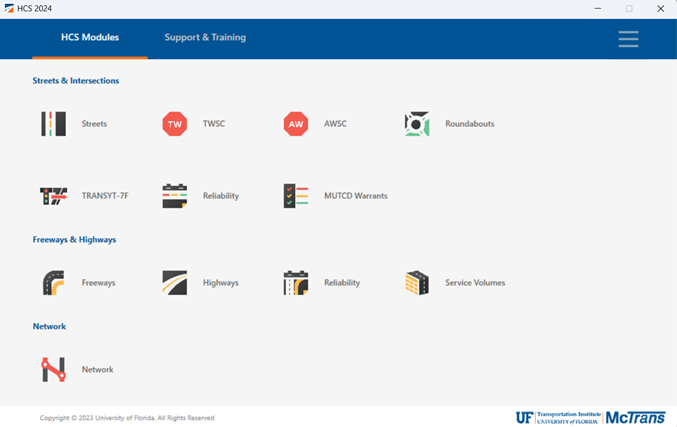
HCS 2024 Main Menu
| SYSTEM ELEMENT | DESCRIPTION |
|---|---|
| Freeways 模块 |
|
| Multilane Highways | |
| 双车道公路 |
|
| Urban Streets |
|
| Signalized Intersections | |
| TWSC |
|
| AWSC | |
| 环岛 |
|
| Ramp Terminals and Alternative Intersections | |
| Other |
|
(13) FHWA pooled fund study [TPF-5(371)]: Developing Highway Capacity Manual Capacity Adjustments for Connected and Autonomous Vehicle under Varying Levels of Volume and Market Penetration; (14) NCHRP 17-65: Improved Analysis of Two-Lane Highway Capacity and Operational Performance; (15) NCHRP 17-88 – Enhancing Pedestrian Volume Estimation and Developing HCM Pedestrian Methodologies for Safe and Sustainable Communities; (16) NCHRP 15-57: Highway Capacity Manual Methodologies for Corridors Involving Freeways and Surface Streets;
